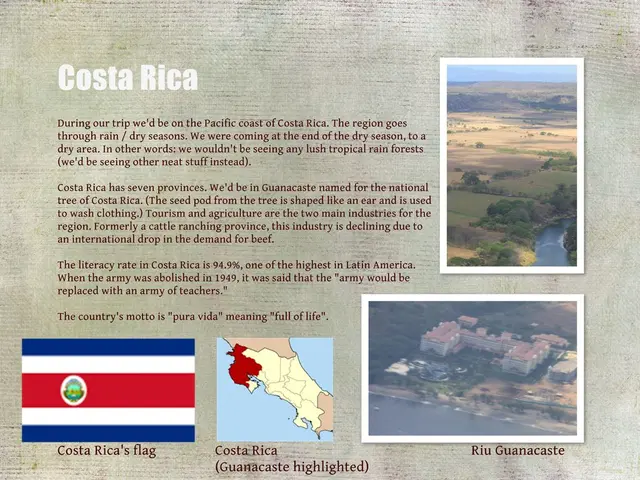Mae Sai District Inundated Due to Sai River's Overflow
The Sai River in Chiang Rai province experienced a flood outbreak on Tuesday, drowning neighborhoods and the bustling Sai Lom Joy market in Mae Sai border district.
The catastrophic inundation was a result of relentless rainfall in the vicinity, causing an excessive influx of water into the Sai River, eventually leading to its overflow. Videos circulating on social media depicted flooding in various areas, such as Koh Sai, Mai Lung Khon communities, downtown Mae Sai, and Sai Lom Joy market, along with the flooding in Ta Lor market of Tachilek border township, Myanmar.
Warayut Khomboon, the chief of Mae Sai district, attributed the flooding primarily to heavy rainfall in neighboring Myanmar, particularly the headwaters of the Sai River.
Previously, the Highways Department had erected a riverbank protection line to prevent flooding at the Thai-Myanmar bridge. However, the removal of former barriers like walls and sandbags during its construction enabled the floodwater to effortlessly surge across both borders, according to Khomboon.
The riverbank protection line is a collaborative project with Myanmar, designed to mitigate flooding along the border. Involving the dredging of approximately 20 kilometers of the Sai and Ruak rivers, it was aimed at reducing cross-border flooding.
It's worth noting that the Sai River flooding can be attributed to a mix of intensified rainfall and environmental factors, including cross-border mining activities in Myanmar's Shan State. These activities have led to heavy metal contamination, soil erosion, and degraded water quality, exacerbating the impacts of flooding during heavy rainfall.
The environmental fallout includes toxic contamination with heavy metals and chemicals, increased sedimentation, and disruptions to aquatic ecosystems and agricultural irrigation. Economically and socially, the floods have resulted in crop and property destruction, water supply threats for 1.2 million people, and health risks from continuous exposure to these contaminants.
However, local groups and mayors, like the Mae Sai Municipality, have been advocating for negotiations with the Thai government to establish cross-border pollution controls and monitoring systems. Despite these initiatives, no comprehensive remediation or flood-prevention infrastructure has been implemented as of now. Shorter-term responses have included post-flood water testing for contaminants and emergency alerts during high-risk periods.
Although Myanmar’s ethnic conflict zones pose challenges for cross-border cooperation, the Thai authorities are yet to secure actionable agreements or allocate sufficient funds for riverbank reinforcement or sediment management.
- The flooding in Mae Sai district, including the Sai Lom Joy market, was primarily caused by heavy rainfall in neighboring Myanmar, specifically in the headwaters of the Sai River.
- videos on social media showed flooding not only in various Thai areas like Koh Sai, Mai Lung Khon communities, downtown Mae Sai, and Sai Lom Joy market, but also in Ta Lor market of Tachilek border township, Myanmar.
- The Sai River flooding can be linked not only to intensified rainfall but also to environmental factors, such as cross-border mining activities in Myanmar's Shan State, which have led to heavy metal contamination, soil erosion, and degraded water quality.
- Despite local efforts to negotiate cross-border pollution controls and monitoring systems, as well as short-term responses like post-flood water testing and emergency alerts during high-risk periods, no comprehensive remediation or flood-prevention infrastructure has been implemented yet.







